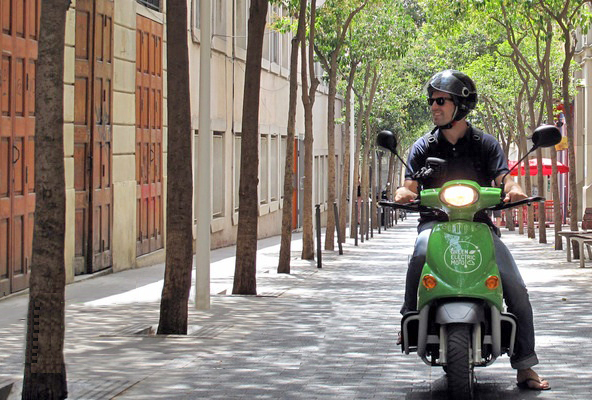Local administrations around the world are stepping up efforts to build resilience into their communities. [14 October 2014 | Peter Boyer]
“He’s from Barcelona.” That was Sybil Fawlty’s way of explaining the physical and verbal ineptitude of Manuel, the Spanish waiter in the 1970s British television series Fawlty Towers.
Barcelona was then a catchword for sad failure. Now the city has a new reputation as a world-leading sustainable community.
“Your definition of a sustainable community please? Just what would that look like?” asked one of my more enduring critics on the Mercury website last week.
A fair question, and the “smart city” of Barcelona is a good place to begin. The city’s ambitious climate response, drawing on urban planning, information technology and environmental data, is already yielding dividends to a supportive citizenry. Some examples:
• The city has significantly cut energy costs by rolling out computer-controlled smart power meters across the city and water-regulated heating and cooling covering 21 square km.
• Barcelona’s street lighting now costs half what it did to operate, and it will get even cheaper. Remote control of lighting and its conversion to LED technology is about half rolled out.
• Water for parks and fountains is controlled remotely, providing maximum value from the city’s water supply during hot, dry summers, for a small fraction of the cost.
• Barcelona has deployed over 260 electric vehicle recharging points drawing on nuclear and renewable power. It now has about 300 public electric vehicles and an estimated 400 private ones on its streets, along with 130 electric motorbikes and 500 hybrid taxis.
The city expects that in each remaining year of the current decade its greenhouse gas emissions will be cut by an amount equal to 18 per cent of 2008 levels to bring it to zero net emissions by 2020.
Among many North American cities pursuing climate action agendas is Portland, Oregon (US). A year ago it updated its already-ambitious plan with 150 new measures aiming to halve emissions from city operations by 2030. The plan includes cutting energy use in all pre-2010 buildings by 25 per cent and zero net emissions from all new buildings and homes, recycling 90 per cent of all city waste, and creating neighbourhoods where 80 per cent of residents can walk or cycle to meet basic non-work needs.
New Zealand’s capital, Wellington, is investing in local renewable power, home insulation, public transport and alternative transportation, recycling and composting regimes, innovation in energy conservation and developing the city as an urban planning centre of excellence.
Australian capital city councils, notably Canberra, Brisbane, Sydney and Melbourne, have adopted highly-innovative carbon-cutting policies. Sydney, for instance, has a 2030 target of 70 per cent lower emissions using power generated from currently-available waste and biomass.
Hobart had a less ambitious climate plan, but without top-to-bottom support it was never much more than window-dressing. It has never been updated and expired in 2013, presenting the incoming council with the challenge of coming up with a new one.
Last week I explored how the idea of a sustainable city had infiltrated campaigns in this month’s elections. Looking further into election manifestos, the most detailed and comprehensive suite of climate measures that I could find was put together by Greens candidate Anna Reynolds.
Reynolds seeks ambitious and specific goals, using as an example Melbourne’s target of zero net emissions by 2020. She advocates a zero-waste regime such as that being rolled out in Brisbane, and among her adaptation measures are limits to home-building on bushfire-prone land.
But the vision of elected representatives goes only so far. Success isn’t just devising a plan but implementing it well, and that requires motivated and committed council staff.
In other municipalities climate change is understood as a factor in council affairs now, let alone tomorrow. Kingborough is leading the way in putting measures in place to cope with increasing damage from bushfire, storms and coastal flooding. Others, such as Clarence, aren’t far behind.
Money speaks. Councils are being forced to grasp the nettle of climate planning because insurance companies, alert to their own bottom line, are backing up council assessments that the physical and financial impact of drought, fire, storm and flood is increasing, not tomorrow but today.
The same is reflected in growing numbers of cities and towns around the world pursuing stronger programs for a better energy return from town precincts, individual buildings and transport, and for monitoring local climate shifts and adapting practices accordingly.
This is ground truthing at work. Local administrators are seeing things happening that higher levels of government have missed, to their shame and to the detriment of us all.

